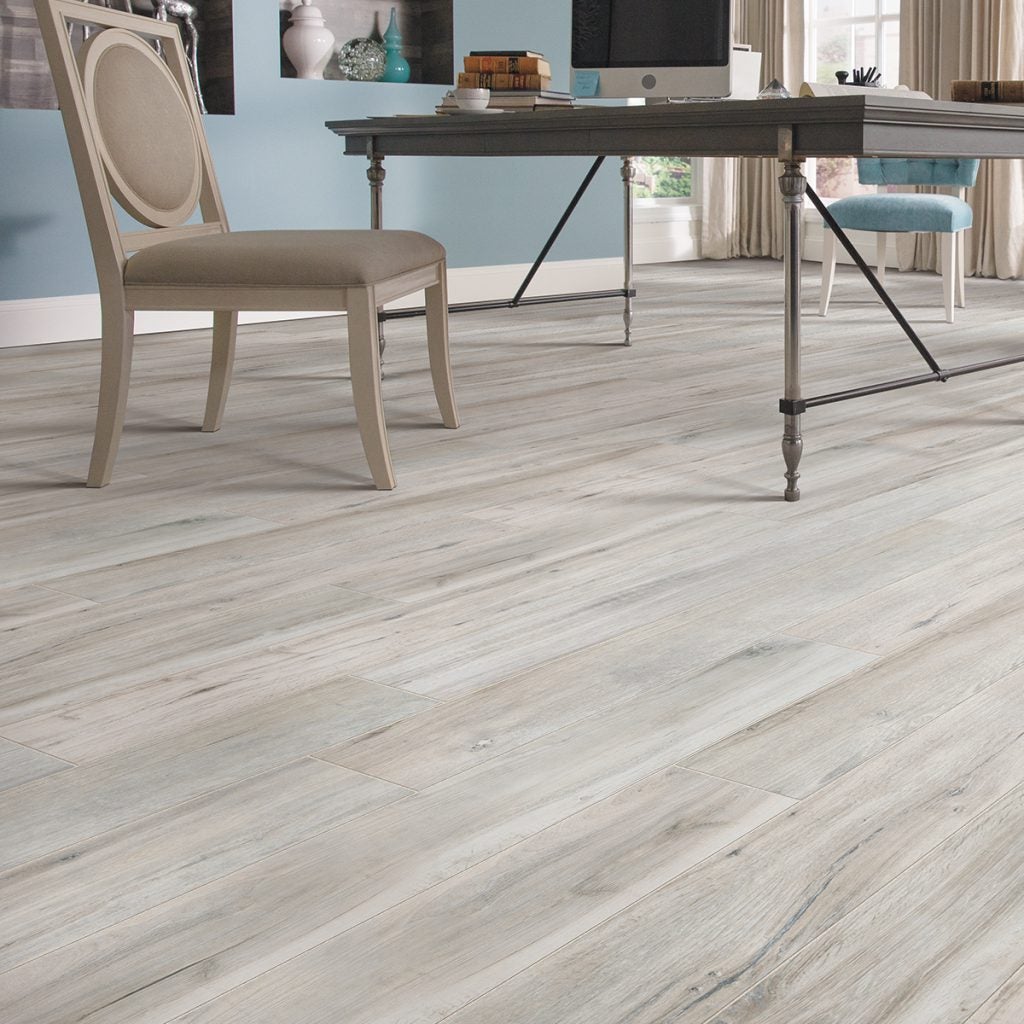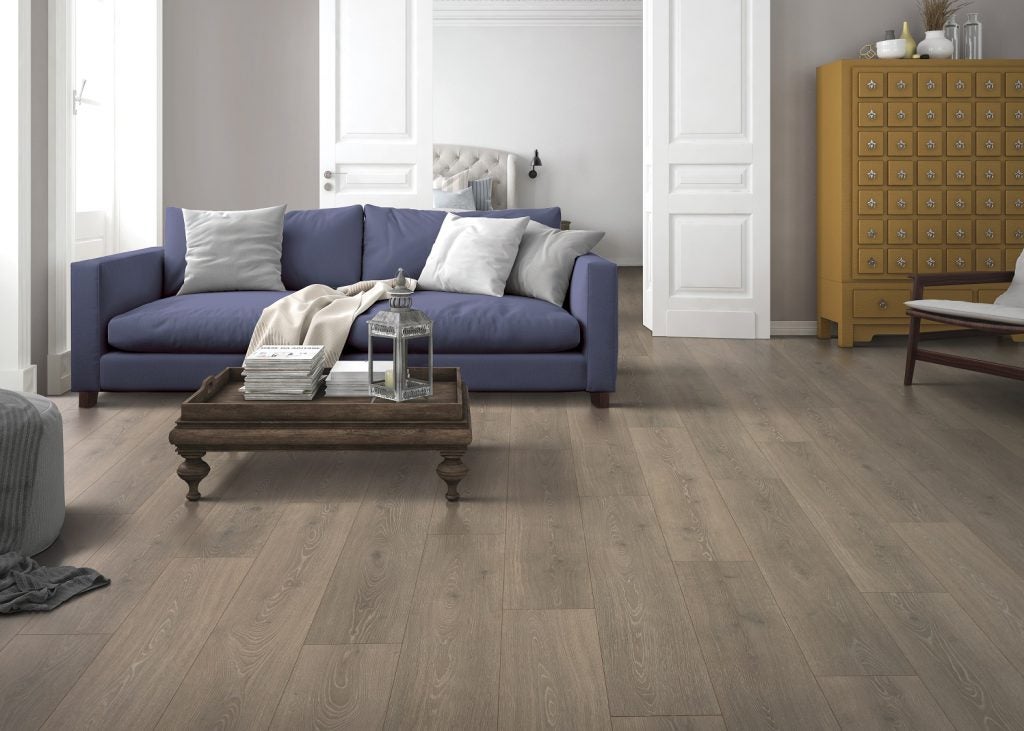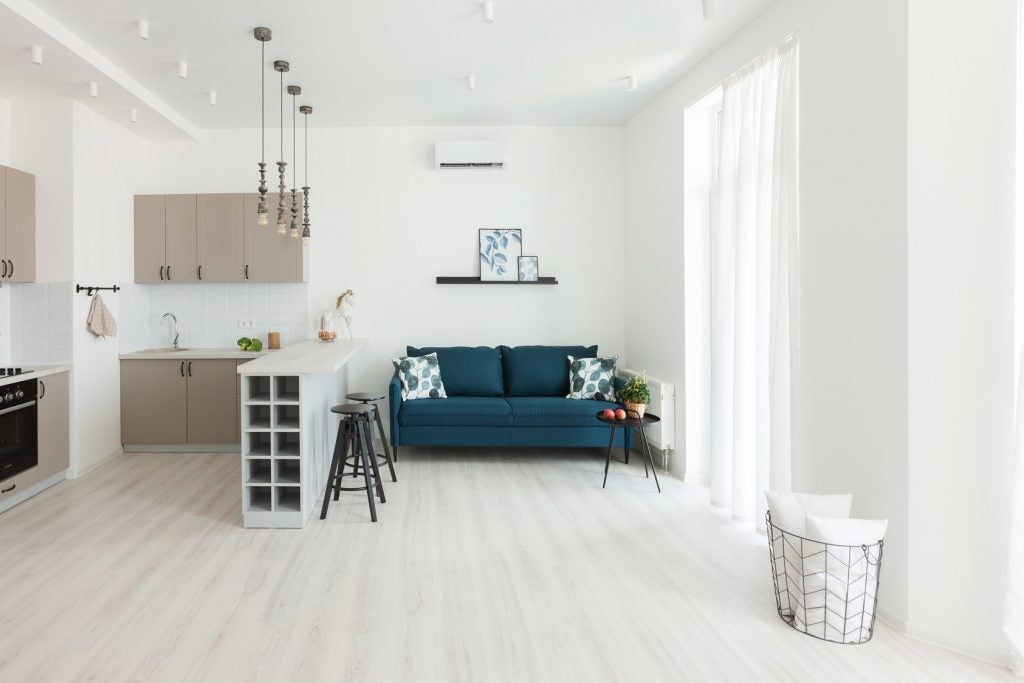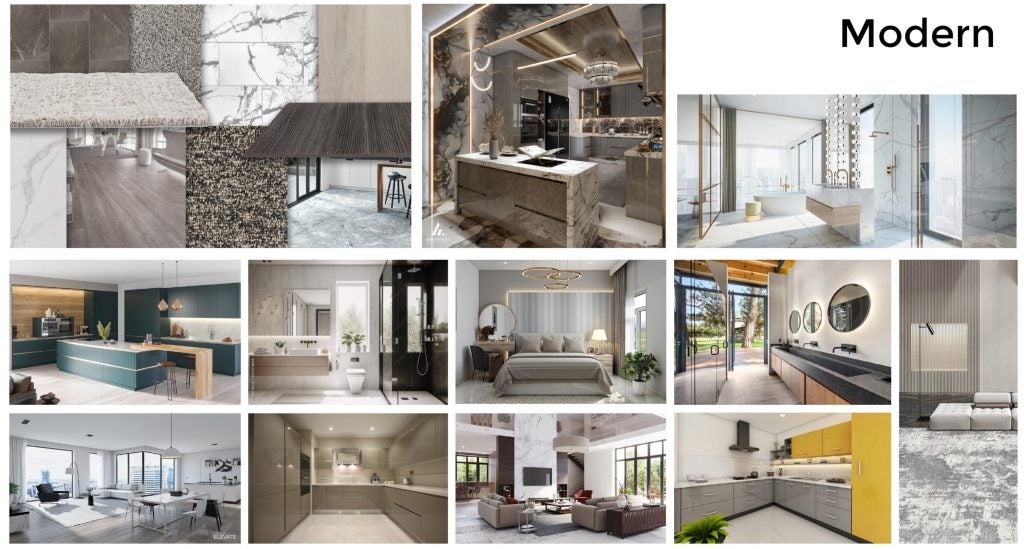As the world around us constantly changes and evolves, so do our tastes in everything from fashion to technology to the ways we spend our leisure time. Interior design trends, like everything else, change quickly and often, and that’s not necessarily a bad thing! One could argue that such dynamism encourages designers to embrace new concepts and adapt quickly to the changing needs of homeowners.
The “modern” design trend, in particular, has gained immense popularity in recent years for its ability to seamlessly blend form and function. As a crucial element of any room, flooring takes center stage when it comes to achieving the modern aesthetic. At Empire Today®, we love everything about the modern flooring trend, and we’re excited to walk you through the latest innovations, materials, and design elements that are reshaping the way we think about flooring in the 21st century!

It’s no secret that the choice of flooring can make or break the character and functionality of a home, especially where the modern design aesthetic is concerned. Fortunately, materials science has caught up to the desire for beautiful, durable, and affordable modern flooring, providing a huge variety of options that not only meet, but often exceed the expectations of today’s design-savvy homeowners.
Before we delve into the types of modern floors (one of our favorite topics!), let’s take a look at the history and various elements of the modern design trend.
If you’ve ever been inside a modern home, or if you’re lucky enough to live in one yourself, you’ve likely experienced the feeling of calm serenity bestowed by the open floor plans, sleek lines, functional shapes, and abundance of natural light. Here’s a more detailed look at the various elements that make up the modern home design trend:
Simplicity and functionality are the cornerstones of modern design. In a typical modern home, you’re more likely to find an open floor plan and light colored, neutral walls and flooring. The decor may be sparse, with an emphasis on natural materials like wood, stone, or exposed brick, blending with modern lines and shapes to create a bold design statement.
Contemporary homes, on the other hand, are designed and built based on whatever the current architectural trends reflect. Because trends and aesthetics are ever-changing, there is no “one size fits all definition” for contemporary design.

The roots of modern design span not only many centuries but also vastly different cultures. Because of the diversity in its origins, modern design encompasses a wide range of design subsets, each with its own unique characteristics and influences.
In the early days of the modern design trend, flooring choices were a bit limited. Oak or maple hardwood has always been favored for its classic simplicity, along with uniquely mid-century materials like linoleum or terrazzo (originally used as a low-cost flooring for homes and public buildings in 15th century Italy , and was favored in mid-century modern homes during the middle of the 20th century). Concrete could also be left exposed in a home or building and polished up to create a clean, industrial look that fit with the modern aesthetic.
The perfect modern floors should provide a clean, neutral backdrop for your signature furniture and decor (or be a focal point in and of themselves) and look great in natural light, while also being durable and easy to care for. Fortunately for today’s homeowners, this can be achieved within almost any budgetary constraints thanks to the plethora of flooring options available at Empire®.

The modern design aesthetic has the advantage of being able to harmonize with almost any type of flooring. With the wide assortment of flooring products on the market today, making that minimalist dream a reality has never been easier.
Pale neutrals like greige (a combination of grey and beige) may be synonymous with modern design, but in reality we are allowed to be as neutral or as bold as we like while still fitting within the modern aesthetic. A light or neutral colored floor provides the perfect backdrop for that bright, vibrant area rug or bold, statement furniture pieces, while a beautiful dark or patterned floor can become a gorgeous statement piece in its own right.
Modern design often incorporates contrast or texture to add visual interest. For example:
One of the simplest and most effective ways to achieve an open concept feel, regardless of how your home was designed, is by using a consistent flooring material throughout the entire space. Whether it’s hardwood, laminate, tile, or another material, a seamless transition between rooms creates a cohesive and unifying look. Strategically placed area rugs are a great way to define separate living areas within an open concept room while also adding a bit of texture and color.

Functionality is just as important as form when it comes to modern aesthetics, and this goes for floors, too. The decision requires taking a variety of factors, such as durability, beauty, and ease of maintenance, into consideration. We’ve outlined some questions to ask yourself as you embark on this journey.
When you book an appointment with Empire, a flooring consultant will come to your home and help you find the perfect floor by taking your lifestyle, budget, and personal aesthetic into consideration.
Keeping your flooring investment looking its best is paramount to maintaining that clean, modern look. Regular sweeping or vacuuming (only a soft bristle broom or vacuum with a hard floor setting for anything other than carpet) lays the groundwork for a sparkling home. Doormats placed at entrances not only look great, they can help prevent dirt and debris from being tracked inside.
Different flooring types may require specific cleaning products, so be sure to check the manufacturer recommendations. In general, avoid using any type of harsh or abrasive chemical cleaner, and avoid using excessive amounts of water.
To further protect your new floors, consider investing in Empire’s Service Plan, which covers damage such as scratches,stains, and warping (above and beyond the individual product warranties).
The allure of modern interior design lies in its ability to capture the essence of contemporary living. When it comes to achieving the combination of simplicity, functionality, elegance, and sophistication that is the goal of the modern aesthetic, your choice of flooring can make all the difference.
At Empire, we are firm believers that the foundation of every great space starts from the ground up. We are dedicated to guiding you through the exciting world of modern flooring possibilities and helping to ensure that your home not only meets but exceeds your expectations for years to come.
Get the latest updates delivered to your inbox.